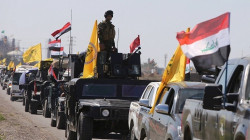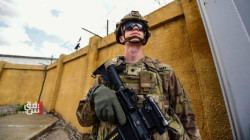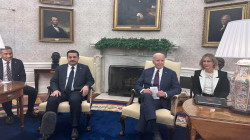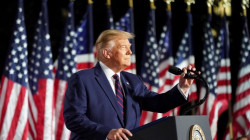Is US media luring Washington into a new war?
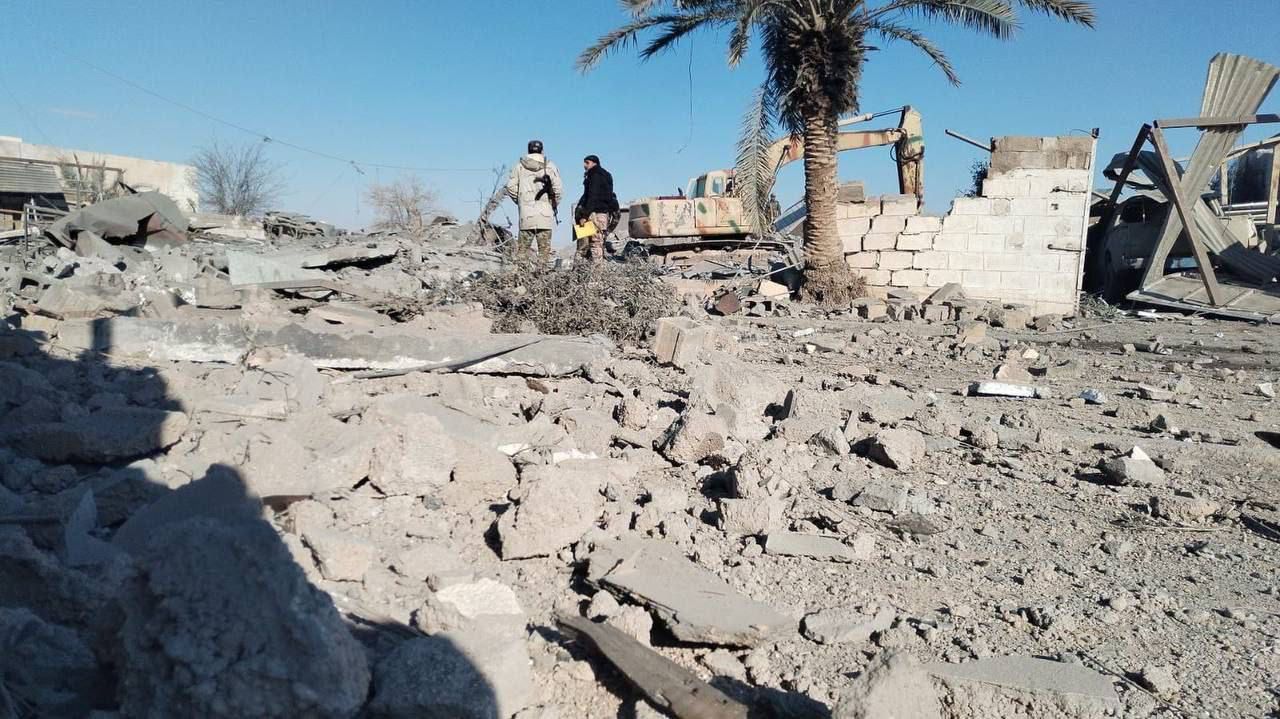
Shafaq News / Over the past weekend, an armed faction supported by Iran conducted a drone attack on a US military outpost near Jordan's borders with Iraq and Syria, resulting in the deaths of three American service members. Subsequently, media focus swiftly shifted towards speculation regarding the nature, timing, and location of the potential US response.
Last Tuesday, reporters hurled inquiries at President Biden as he departed from the White House. While he hinted at having made a decision regarding a response and emphasized that he was not actively seeking a broader conflict in the Middle East, he remained vague on specifics. When pressed for further elaboration, Biden retreated, stating "we will see," before proceeding to board his awaiting helicopter.
As the week unfolded, officials consistently reaffirmed the imminent military retaliation, although it had yet to materialize by week's end.
Then, on Friday, the US hit eighty-five targets in Syria and Iraq that it said were connected to Iranian forces and proxy groups affiliated with that country. Biden put out a statement reiterating that while he does not “seek” conflict, “if you harm an American, we will respond”—but, as Politico noted, he did not appear in person to explain the strikes. “For a public perhaps bewildered about the mission of the Americans who were killed in Jordan, or the ramifications of what is starting to look more like a multi-front war, Biden has had remarkably little to say,” Politico continued.
Administration officials did conduct an on-the-record call with reporters, who pressed for operational specifics. Yesterday, Jake Sullivan, the national security adviser, pulled almost a full Ginsburg to take questions from Sunday-show hosts. Asked repeatedly whether the administration was ruling out strikes inside Iran itself, Sullivan demurred. “Sitting on a national TV program,” he told NBC, “I am not going to rule in and rule out any activity anywhere.”
If the administration was criticized, in some quarters, for a lack of transparency around the strikes, it was criticized in others—particularly on the right—for excessive transparency, at least ahead of time; the editorial board of the Wall Street Journal described the strikes, with more than a touch of hyperbole, as “one of the most advertised military attacks against an enemy in history.” This advertising, some analysts suggested, might have been the point, allowing Iran to move personnel out of harm’s way and thus dialing down the risk of further escalation; one observer told the BBC that the US seemed to be taking a “Goldilocks approach” that was neither too “hard” nor too “soft.” In any case, the strikes were not the end of the story—over the weekend, US forces twice hit targets associated with the Iran-linked Houthis in Yemen, and administration officials have suggested that further strikes are likely (even if, despite Sullivan’s refusal to be drawn, a direct attack on Iran looks highly unlikely, at least for now).
The strikes come amid increasingly widespread “fears”—in the classic passive-voice media parlance—of an all-out war in the Middle East, sparked by Hamas’s attack on Israel in early October and Israel’s subsequent bombardment of the territory. As is often the case at such moments of tension, some observers have questioned not only the transparency of the US government in its military maneuvers, but the US media’s own role in stoking war fever. Last week, the progressive news show Democracy Now! described the media as being partially behind a “drumbeat” demanding a military response to the Jordan attack.
Spencer Ackerman, the author of the newsletter Forever Wars, wrote that major news organizations were even “helpfully offering options for what to bomb.” And such outlets, the media critic Dan Froomkin charged, “seem enlivened by the possibility” of a major regional conflagration, with reporters “basically braying for military solutions, willfully forgetting the lesson of Iraq (and Afghanistan and Vietnam) that US military intervention pretty much always makes things worse.”
As I have written on several occasions, leading voices within the US media industry have indeed beaten a martial rhythm in the past, be it helping an administration sell an overseas intervention (as in the case of Iraq) or scolding an administration for ending an overseas intervention (as in the case of Afghanistan). Even outside of such historic inflection points, hawkish punditry on cable news has been a routine sight over the years (who can forget Donald Trump “becoming president” by ordering a strike on Syria in 2017?), as have hawkish editorial stances from mainstream publications. (Last week, the editorial board of the Washington Post demanded “devastating retaliation” against the perpetrators of the attack in Jordan.)
This is not to say that hawkishness has been the default setting of the entire US media landscape, or that hawkish punditry has always been instinctive or reckless. When Trump ordered the assassination of the senior Iranian general Qassem Suleimani, in 2020, citing flimsy claims of “imminent” attacks on Americans, various establishment media figures expressed skepticism; more broadly, ascendant voices within both the progressive and right-wing media spaces have challenged US military adventurism on ideological grounds. (When two Republican senators called on Biden to strike Iran last week, Tucker Carlson called them “fucking lunatics.”) This time around, too, the picture strikes me as at least somewhat nuanced. Asking questions about planned strikes isn’t the same as advocating them. Some otherwise hawkish observers (including the Post’s editorial board) have stopped short of calling for strikes inside Iran.
Indeed, generalizing about the coverage—as with any heavily covered story—is perilous. Still, much of it has struck me as being at least subtly rooted in the long-standing assumption that US military intervention in the Middle East is the natural way of the world, rather than a contestable, ongoing policy choice—even as the latter way of looking at things seems to be ascendant politically. At this pivotal moment for the region and America’s role within it, we need more big-picture coverage, grounded in historical context and willing to scrutinize the orthodoxy of the foreign-policy establishment. This would be difficult enough absent the fast-moving picture on the ground. But without shifting our perspective, that fast-moving picture won’t make sense. Eventually, incremental escalations can reach a tipping point that forces fresh perspective on us.
This is not to say, of course, that granular coverage of the incremental escalations is not needed—it very much is—or that no one is currently doing the bigger-picture work. Ackerman, for instance, described the current moment in the Middle East as the “Eighteenth Brumaire” of the war on terror (a reference to the Marx adage that history repeats itself first as tragedy, then as farce) and situated it in recent historical context. “The War on Terror shows that as the US meets military frustration, the same bellicose voices in both our political parties, our Security State, and our press will expand their war aims rather than acknowledge checkmate,” he wrote. “Today it’s a call to strike targets inside Iran. Tomorrow it will be a call for regime change.”
There has been some compelling coverage, too, of the domestic political dynamics of this moment, with reporters exploring, for instance, Arab American voters’ anger at Biden’s approach toward Israel’s bombardment of Gaza and the (in my view underappreciated) role that aversion to forever wars is playing in boosting Trump’s political appeal on the right. And yet in this arena, too, some of the coverage has been shallow: reduced to speculation about Biden’s poll numbers, or he-said-she-said partisan blamecasting, or supposed contrasts between Trump and his last standing rival, Nikki Haley, that fail to dig particularly deep into the substance of Haley’s hawkishness or the very hawkish aspects—not least the Syria strikes and the assassination of Suleimani—of Trump’s record, that belie the cliché of his isolationism. (Last week, some headlines uncritically echoed Trump’s claims that the Jordan attack was attributable to Biden’s “weakness and surrender” and would “NEVER have happened” on his watch—even though US positions in Iraq and Syria were attacked when Trump was president.)
At its best, the coverage of the past week or so managed to tie the ultimate, very concrete stakes here—the actual and potential loss of human life—to a more abstract opening of the imagination about the US role in the world; at its worst, it skated over the top of the former but below the latter, dwelling in a zone of abstraction but one tethered to conventional wisdom. There has, for sure, been some moving coverage of the soldiers killed in the Jordan attack. So far, at least, the possible civilian toll of the reprisal strikes has received comparatively little attention, at least that I’ve seen. The Biden administration has said that its targets “were carefully selected to avoid civilian casualties.” Iraqi officials and sources have countered that civilians were among the casualties, though at least one such claim seemed to involve some discrepancies. The picture remains murky. It is to be hoped that, in the coming days, and as the strikes continue, reporters work to elucidate it.
On Friday, toward the end of the press call that US officials organized to brief reporters on the Iraq and Syria strikes, a journalist from Al Jazeera asked about the US claims around civilian casualties, and whether the administration intended to share the “clear, irrefutable” evidence that it said linked the targets to the Jordan attack. A tense exchange ensued. When the reporter asked a lieutenant general on the call whether the government expected the American public to accept its word on the strikes, the lieutenant general replied, “Yes.” The reporter followed up: “Do you feel that the American military has a good track record when it comes to—.” A spokesperson cut in. “We’re going to move on to the next question,” he said.
(Colombia Journalism Review)
